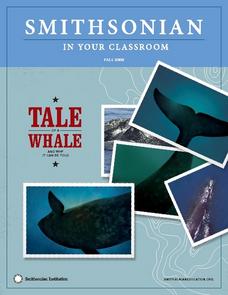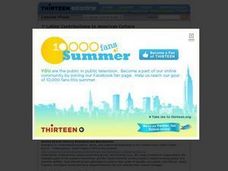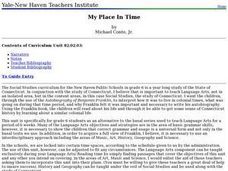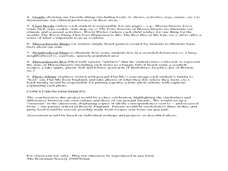Curated OER
Chinese Inventions
Students identify inventions as coming from China. In this Chinese inventions lesson, students are given a list of common items such as cast iron, a wheelbarrow, and the decimal system, then conduct research to identify where they were...
Curated OER
Naturral Born Robots: Robots Have Feelings Too
Students explore robotics. They design a simple device that simulates a human arm lifting a mass. Students test the strength of their arm. Students discuss artificial intelligence.
Curated OER
Disease and Epidemics
Students watch a video to introduce the study of historical outbreaks of infectious diseases and epidemics. They create charts of diseases after reading an article and share their information as a class.
Curated OER
Hey Kid, Want To Buy A Bridge?
Students study the building of the Brooklyn Bridge and the inventions of Thomas Alva Edison. They design an infomercial to sell a product or a service for an invention. They create an invention that improves the world and write an...
Curated OER
A Tale of a Whale: And Why It Can Be Told
Students examine the characteristics of particular whales. In this whale characteristics lesson, students discover the methods scientists use to track whales and attempt to match the unique pattern of callosities themselves. A role...
Curated OER
Latino Contributions To American Culture
Students create their own working definition of what it means to be an American. They examine the achievements of Latinos and discuss how the contribution of these Americans have enriched and helped shape American culture.
Curated OER
Germs and Preventing Illness: An Inner and Outer
First graders looks at germs through a microscope and identify two that can make us sick. They compare their mouth before and after they brush their teeth and practice proper hand washing techniques. They study the impact of Edward...
Curated OER
Inference By Analogy
Students infer the use or meaning of items recovered from a North Carolina Native American site based on 17th-century European settlers' accounts and illustration.
Curated OER
The Decision to Go to War
High schoolers examine President Bush's decision to go to war with Iraq. They work together to discuss a topic related to this given to them by their teacher. They answer questions to complete the lesson.
Curated OER
My Place In Time
Sixth graders interpret Franklin's style, his ease of writing and content, using this to inspire, motivate and guide them to do more writing. They list Franklin's civic accomplishments and political accomplishments. They name 4...
Curated OER
In the Future we will all be Mixed Bloods and Mestizoes
Students examine the concept of origin and ethnicity. In this ethnic studies lesson, students engage in a variety of interdisciplinary activities including posters, and discussions to better understand our past and future.
Curated OER
Types And Magnitudes Of Earthquakes
Learners investigate the concept of earthquakes and the different types of magnitudes. They research the Richter scale and how it is used to measure the intensities of earthquakes. Students then apply the concept by completing a...
Curated OER
Out of Old England in the 1630s-Flat Me Project
Students write letters to penpals. In this geography/literacy lesson, students become penpals with a classroom in England to learn about customs and society across the ocean. Flat Stanley by Will Holton is read aloud, and students...
Curated OER
Study of Fossils
Fifth graders dig for fossils. In this fossil lesson plan, 5th graders read about the oldest found fossils and discuss the process of fossilization. They dig for their own fossils in a fossil box made of several dirt layers.
Curated OER
Art and Anatomy: The Vitruvian Teen
Twelfth graders create an artistic version of a Vetruvian teen. In this anatomy lesson, 12th graders design an experiment to test the theory of the ideally proportioned man. They present their findings in class.
Curated OER
Living With Risk: The Human Element of Natural Disasters
Students explore human elements that are a part of natural disasters, read a Hawaiian myth, conduct a survey, discuss why people choose to live in high risk areas, and participate in a writing activity based on studenT real life accounts...

















